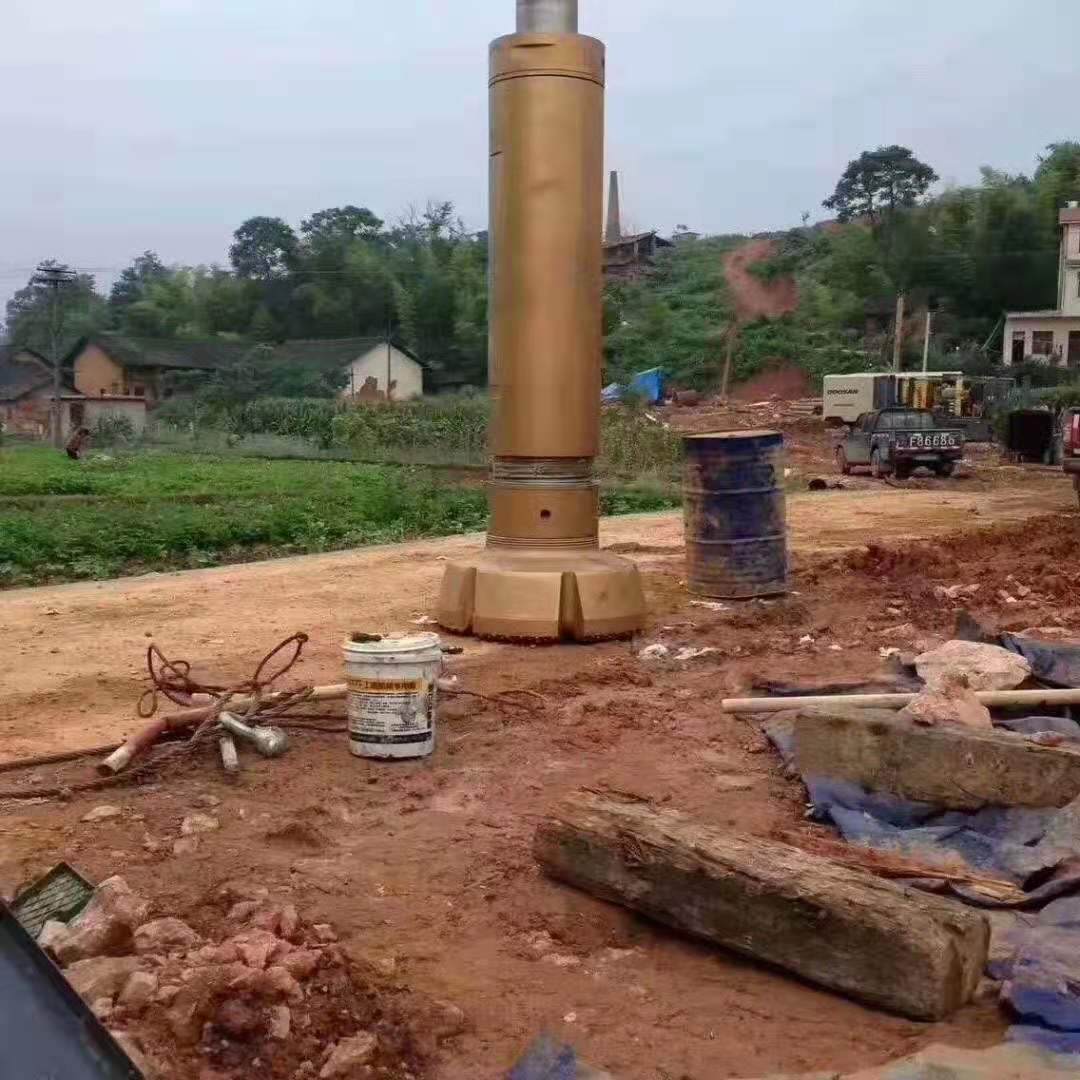Drill Hammer Selection for Different Formations in Drilling Rigs
 Selecting the right drill hammer for the specific formation being drilled in a drilling rig operation is essential for efficient and successful drilling.
Selecting the right drill hammer for the specific formation being drilled in a drilling rig operation is essential for efficient and successful drilling.Soft Formations: When dealing with soft formations, such as clay or loose soil, a pneumatic drill hammer with a relatively high frequency of impacts can be a good choice. The high – frequency impacts can quickly break up the soft material, allowing for fast drilling progress. Pneumatic drill hammers are also lightweight and easy to handle, which is beneficial in such formations where the drilling resistance is low. 例如, in a construction project where shallow foundation holes are being drilled in clay soil, a pneumatic drill hammer can complete the task rapidly and with less effort compared to other types of drill hammers. Additionally, the cost of operating a pneumatic drill hammer in soft formations is relatively low as it requires less powerful and expensive equipment.
Medium – Hard Formations: In medium – hard formations, like limestone or some types of sandstone, a down – 这 – hole (DTH) drill hammer can be very effective. DTH hammers deliver powerful impacts directly to the drill bit at the bottom of the hole. The high impact energy of DTH hammers can break through the medium – hard rock, while the continuous rotation of the drill bit helps to remove the cuttings. The choice of DTH hammer size and configuration should be based on the specific characteristics of the formation, such as the hardness and the thickness of the rock layers. For instance, in a limestone quarry, a medium – sized DTH hammer with a carbide – tipped drill bit can be used to drill holes for blasting. The DTH hammer’s ability to deliver concentrated impacts at the hole bottom ensures efficient rock breakage and high drilling productivity.
Hard and Abrasive Formations: Hard and abrasive formations, such as granite or quartzite, pose a significant challenge. For these formations, a hydraulic drill hammer is often the preferred option. Hydraulic drill hammers can generate extremely high impact energies, which are necessary to break through the hard rock. The use of hydraulic fluid also provides better control over the impact force and frequency. 另外, drill bits with special hard – facing materials, such as tungsten carbide, are typically used in combination with hydraulic drill hammers to withstand the abrasion from the hard rock. In a deep – mining operation where granite is being drilled, a large – scale hydraulic drill hammer equipped with tungsten – carbide – tipped bits can effectively penetrate the hard rock. The hydraulic system allows for precise adjustment of the impact parameters according to the changing rock conditions, ensuring continuous and efficient drilling.
Variable Formations: In formations with a high degree of variability, such as those with alternating layers of soft and hard rocks, a versatile drill hammer that can adjust its impact energy and frequency is ideal. Some modern drill hammers are equipped with advanced control systems that can sense the changing drilling conditions and automatically adjust the operating parameters. 例如, a top – hammer drill hammer with an adjustable impact mechanism can be used to adapt to the different rock layers within the formation. When encountering a soft layer, the impact energy can be reduced, and the frequency increased, while for a hard layer, the impact energy can be increased to ensure effective drilling. This adaptability not only improves the drilling efficiency but also reduces the wear and tear on the drill hammer and bit, extending their service life.
 邦欣钻机
邦欣钻机